Along with the Louvre, the Colosseum, and WWII locations, Bran Castle, also known as Dracula’s Castle, was a place I had dreamed of one day visiting. What I learned the most from visiting these historic locations is you cannot grasp the view, the smell, and the scale of such places unless you experience them yourself.
I have long been interested in dark history. So when I had the opportunity to travel to Europe in 2001 I took it. One of the 15 countries we were traveling through was Romania. Being a gothic horror lover, I could not wait to visit Bran Castle in Transylvania. It’s widely accepted to be the inspiration behind the home of Abraham “Bram“ Stoker’s Dracula, published on May 26, 1897. A wide range of ‘Dracula’ editions are available at Amazon.com. We may receive a commission on qualifying purchases.
Located deep in the Romanian countryside, the castle rests imposingly atop a rocky outcrop at the foothills of the Carpathian Mountains. Overlooking the village of Bran, it is only a 30-minute drive southwest of Brasov (one of the most enchanting cities I have visited). The history of the castle is extensive. It has served as a fortress, and residence, and has been a source of inspiration in Gothic horror literature.
Pin To Pinterest
Journey To Bran Castle
While traveling through this region we visited several medieval villages (often named communes in Romania). I was mesmerized by the Gothic architecture. The attention to detail was breathtaking. Meandering through the cobblestone streets I felt transported to another era. Many of these old pathways were often overshadowed by gargoyles. They were quite intimidating and made me feel uncomfortable, almost like I was being watched.
The surroundings in Romania were strange and new and so were the cultures. I use the plural because Romanians come from a wide range of diverse backgrounds. There was an obvious distinction between different groups of people. While we witnessed many who were living a relatively modern life, driving cars and wearing the latest fashion, we did encounter other people who were wearing cloth shoes and using animals to draw their carts, including Gypsies.
The Gypsies were as I imagined they would be. The women had gorgeous long hair and woven shawls draped over their shoulders. We often passed their families traveling along the roadside in wagons. It was like stepping into a movie or a storybook. I had romanticized these people my whole life.
It didn’t take long for my friends and me to realize that you must watch your back. The country Romania, as beautiful and magical as it is, was not a place for the foolish traveler, neither then, nor throughout history.
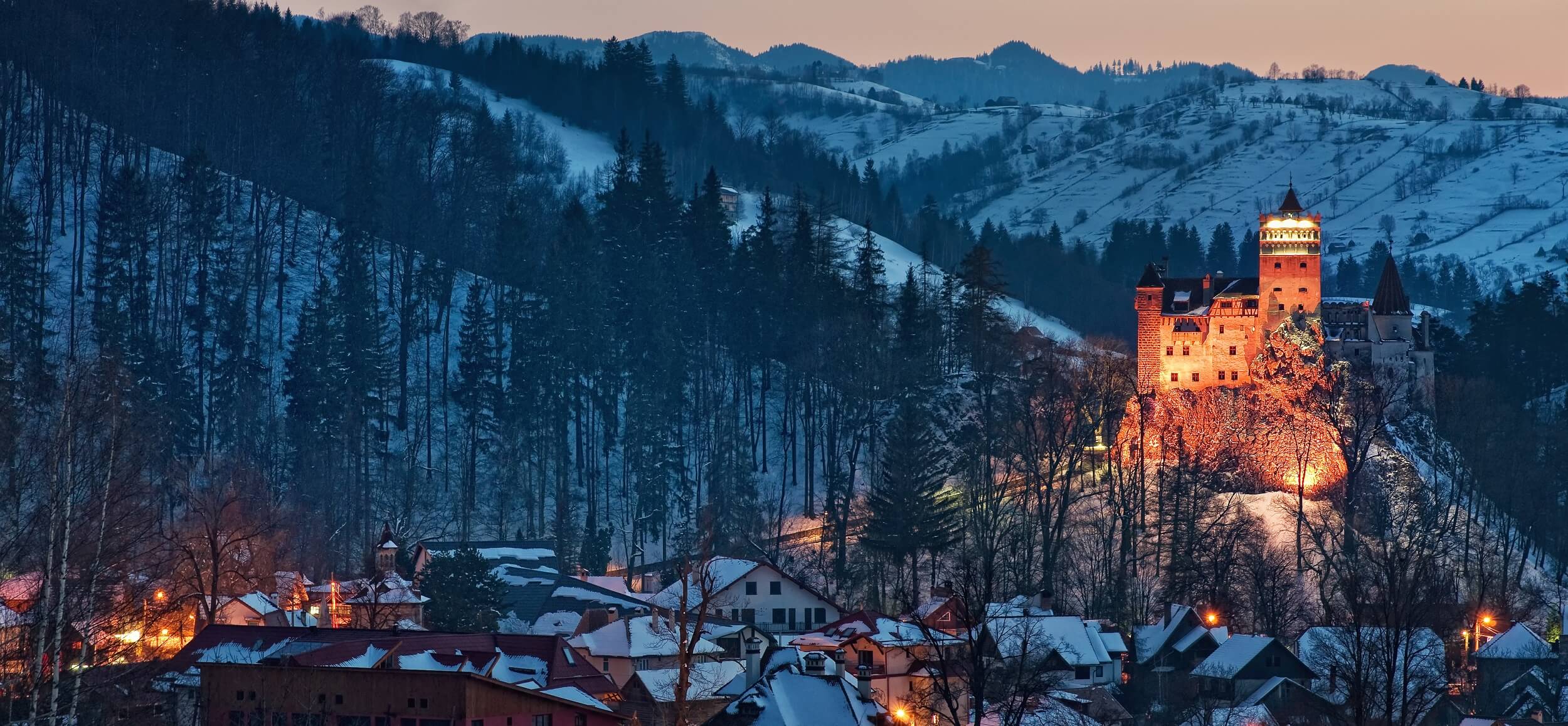
My Experience of Bran Castle
My first impression of Bran Castle was that of awe. To access the castle you must walk up a very long cobblestone pathway. You cannot help but feel the gravity of the castle towering before you. Once I entered the castle via the long stone staircase I felt a cold and unwelcoming feeling, like that of an uninvited guest. I made sure to be present and take in all I could with my limited time.
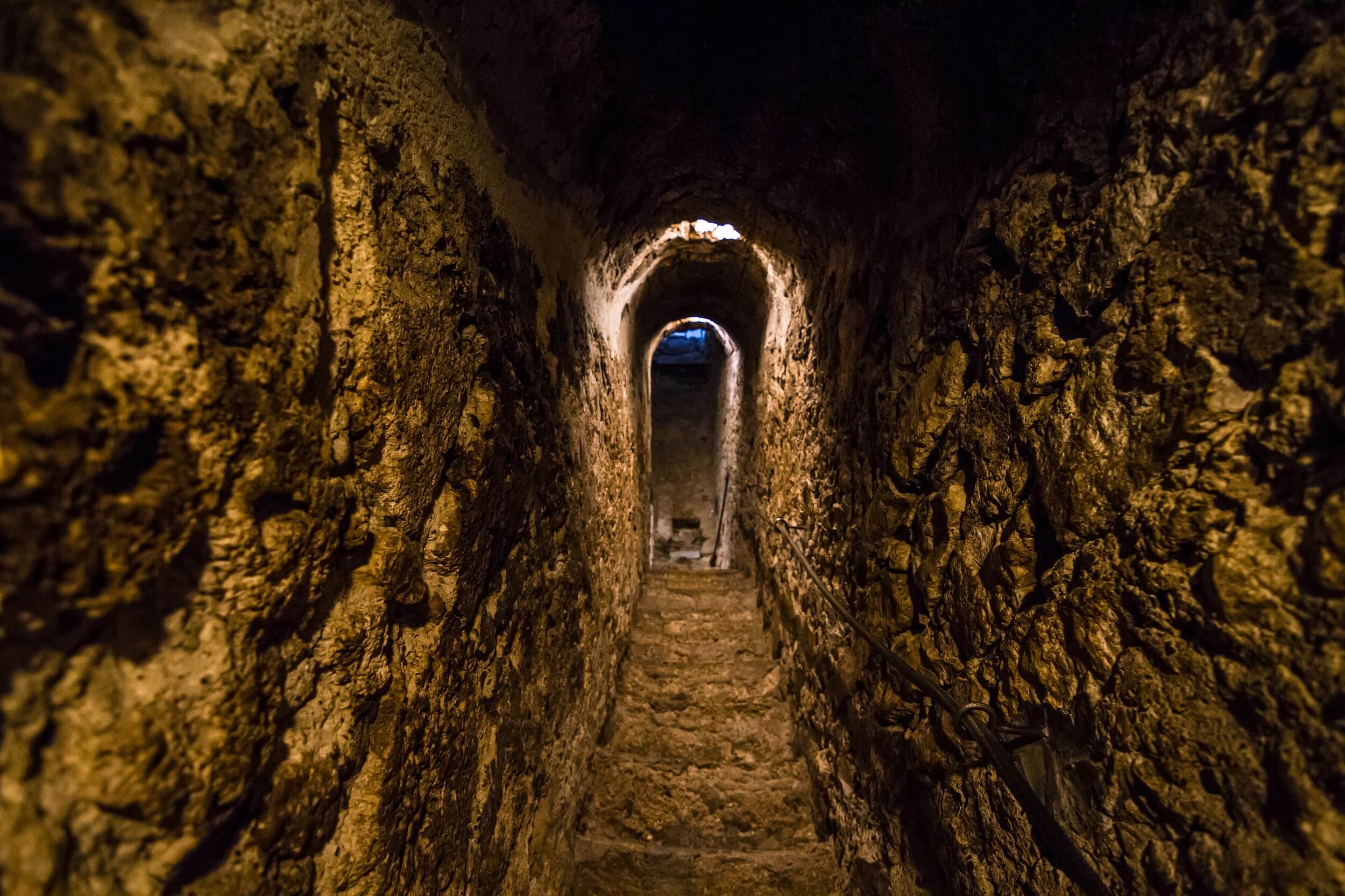
Secret Stairs, Bran Castle, Romania
The building had undergone periods of restoration leaving much of the interior transformed. A secret passageway that had been hidden for many years was found after one of these periods. The entryway to it was located behind an old fireplace. Without this discovery, we may not see what Bran Castle looked like when it was first constructed. The stairs in the passageway were extremely narrow and, not to mention, quite creepy.
At Bran Castle, I walked through the courtyard with the famous well. Like other tourists, I tossed in a coin and made a wish. I learned recently that it is not a real well. After the castle had been gifted to Queen Marie in 1920, she converted the shaft into an elevator. The original, 57-meter-deep, well of the castle supplied insufficient water. After this water was piped to the castle from natural springs across the valley. The hidden elevator allowed the Queen, suffering from arthritis, to access the gardens and external grounds more easily.
I then ventured through the many rooms, admiring the decadent furniture, ornaments, and art.
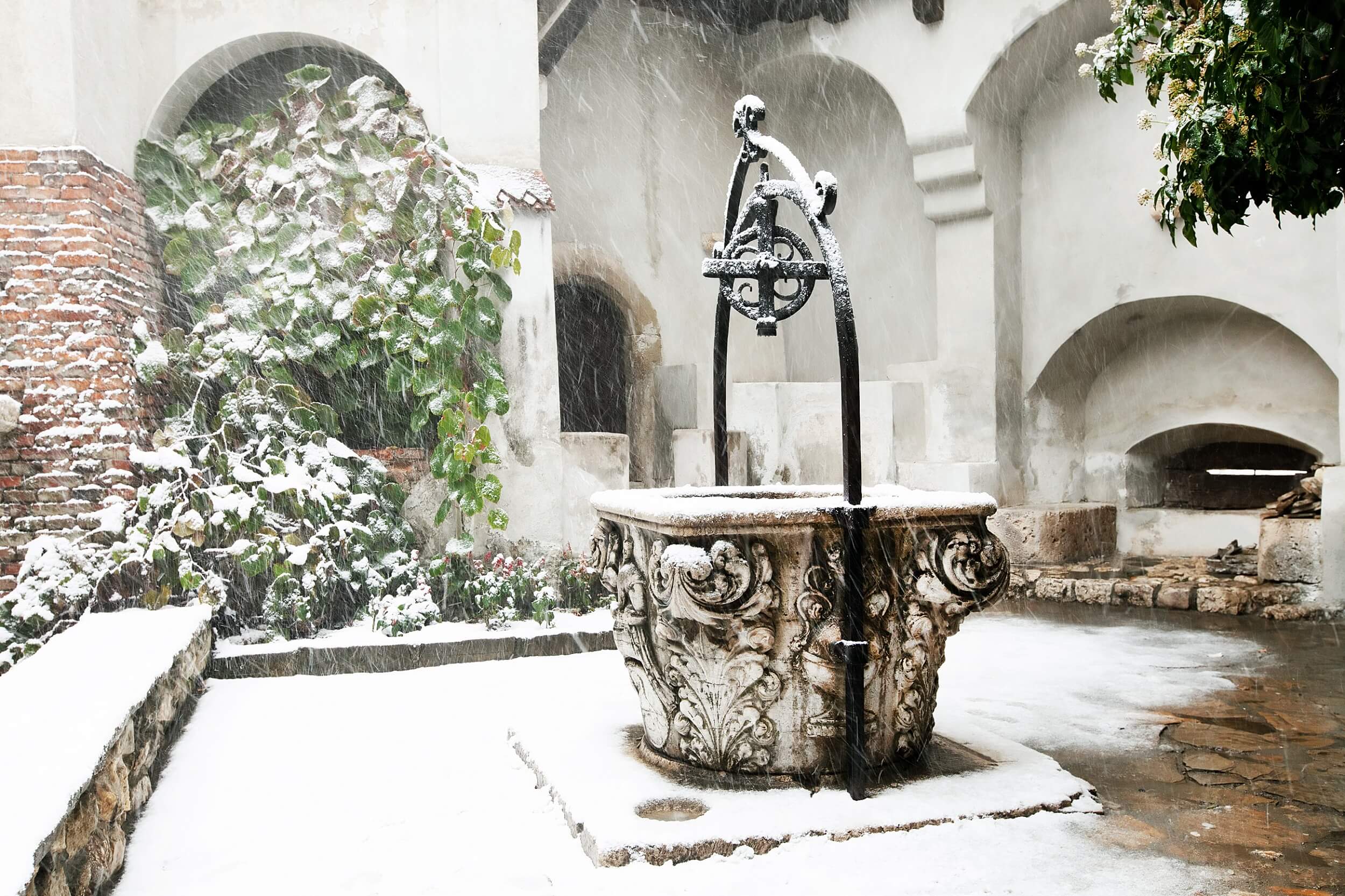
The Well at Bran Castle
A History of Medieval Torture
It wasn’t until I came upon the Medieval Torture Instruments within Bran Castle that an utter feeling of horror and dismay took over. Each instrument was accompanied by vivid descriptions demonstrating how each one was used. Unlike Dracula, this was not part of some fictional story. Sadly, these devices were real and used to inflict unimaginable pain and suffering. I still shudder just thinking about it.
During the 15th century, a Wallachian Voivode (Meaning; Prince, General, Warlord, or Military Leader) Vlad III Dracula, ruled the land. Vlad gained notoriety for the barbaric way in which he chose to torture his enemies. During a particular battle, The Night Attack at Târgoviște, he is said to have impaled 23,844 Turks. This earned him the sobriquet ‘Vlad The Impaler’ (Romanian: Vlad Țepeș) which he is still commonly known as today.
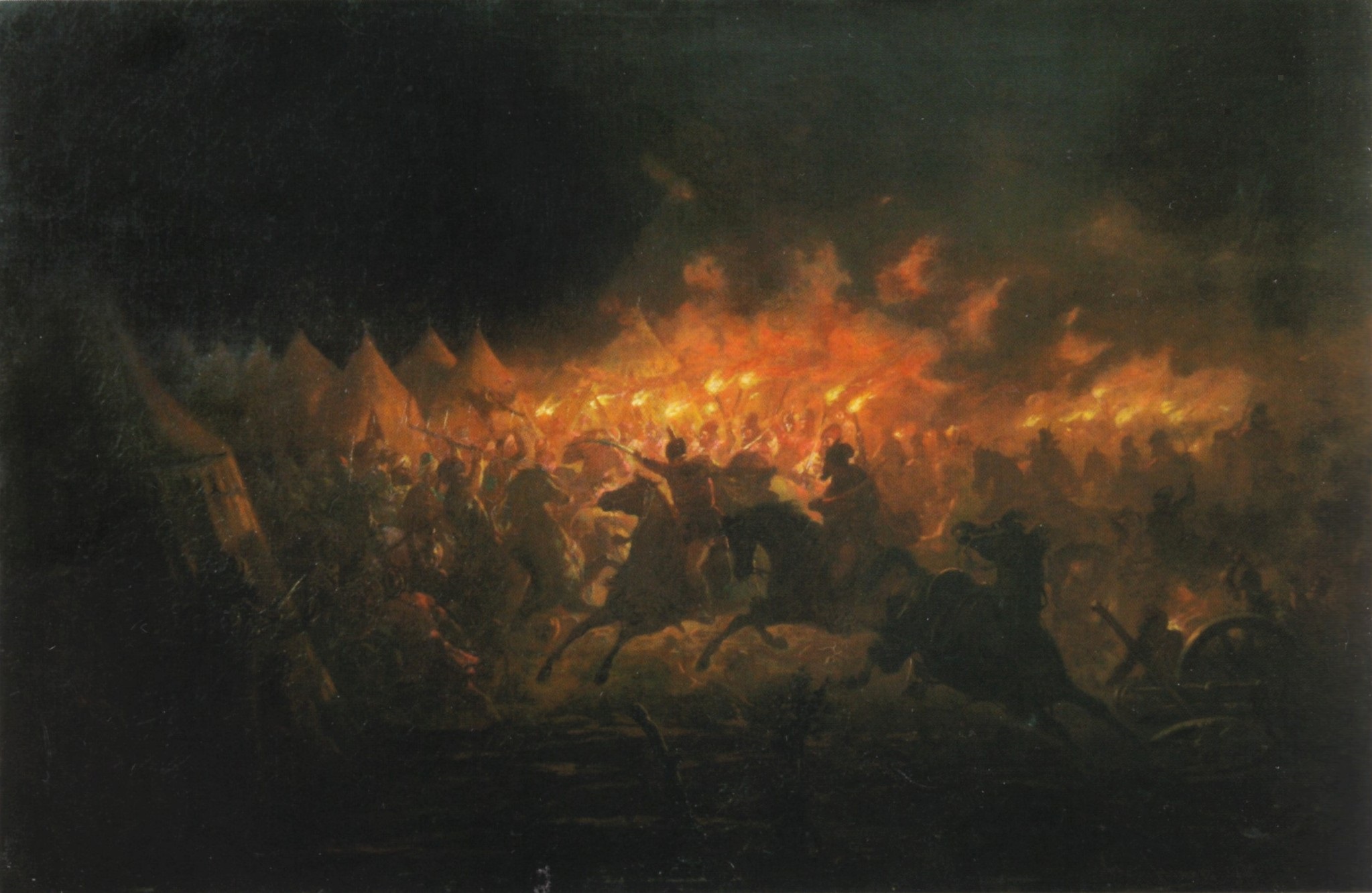
The night attack at Târgoviște by Romanian Painter Theodor Aman.
The Connection Between Count Dracula, Bran Castle, and Vlad The Impaler
This year will mark the 23rd anniversary of my visit to Bran Castle in Transylvania. So as you can imagine, before writing this article, I vaguely remembered the details connecting Count Dracula, Bran Castle, and Vlad The Impaler. Many believe Bram Stoker was the first to do so in his legendary Gothic Novel, Dracula.
During my recent studies, I found sources claiming no affiliation. It has been years since I first read Dracula. I am in the process of re-reading it and taking notes. After I have finished, I will read ‘Dracula: Sense and Nonsense‘ by Elizabeth Miller. According to descriptions and reviews of the book she exposes many of the modern misconceptions relating to both Dracula as a character and Bram Stoker’s inspirations.
A customer review of Dracula Sense and Nonsense:
With all the fiction masquerading as fact in the world of Dracula studies and the unsubstantiated rumors about what Bram Stoker knew and didn’t know, Miller’s book should be required reading for any “serious Dracula scholar.”
I thought it obvious that Stoker drew inspiration from Bran Castle and Vlad The Impaler. I believe the parallels between the real-life Vlad III Dracula and the fictional Count Dracula are too many to dismiss. Some records connect Vlad Dracul III to Bran Castle (which I go into more detail about later). Because of this, I can see why people would believe the Charles Boner illustration of Bran Castle (Also known as Törzburg, Toerzburg, Terzburg Castle) was a source of inspiration for Stoker when writing the novel.
Although, I am willing to be further educated on the subject and promise to share my thoughts in a future post. I would include the information here, but feel it is interesting enough to merit proper research and a dedicated article. So stay tuned!
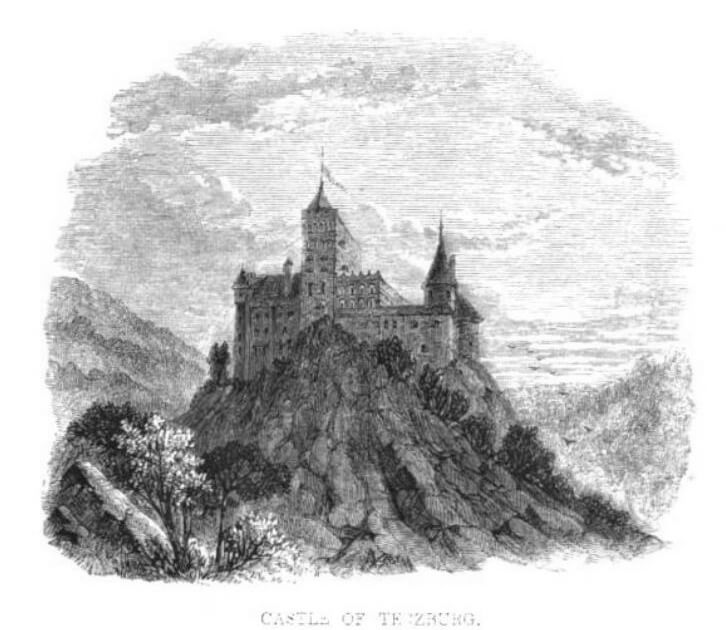
Charles Boner Illustration of Bran Castle (Also known as Törzburg, Toerzburg, Terzburg Castle)
Bram Stoker
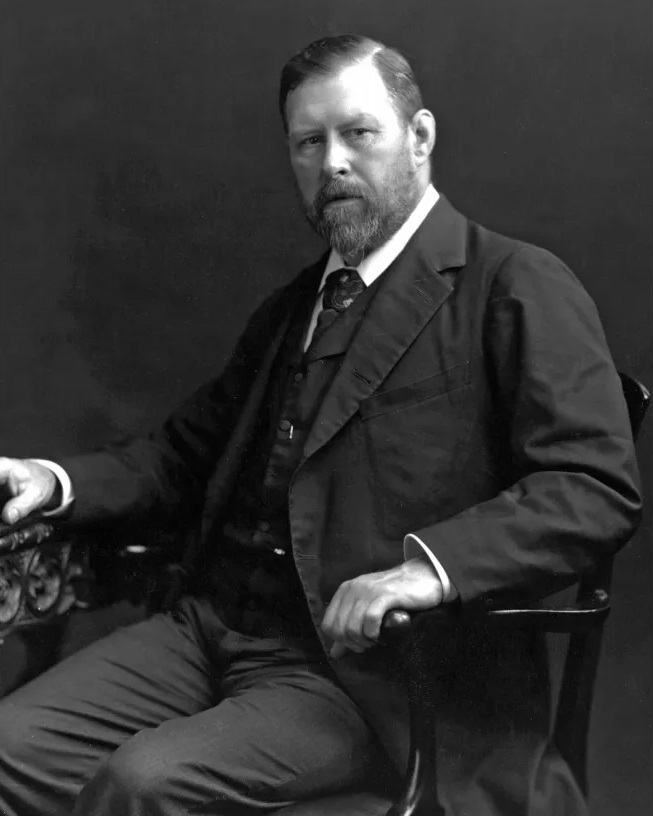
Abraham “Bram” Stoker – Author of Dracula
Vlad III Dracula
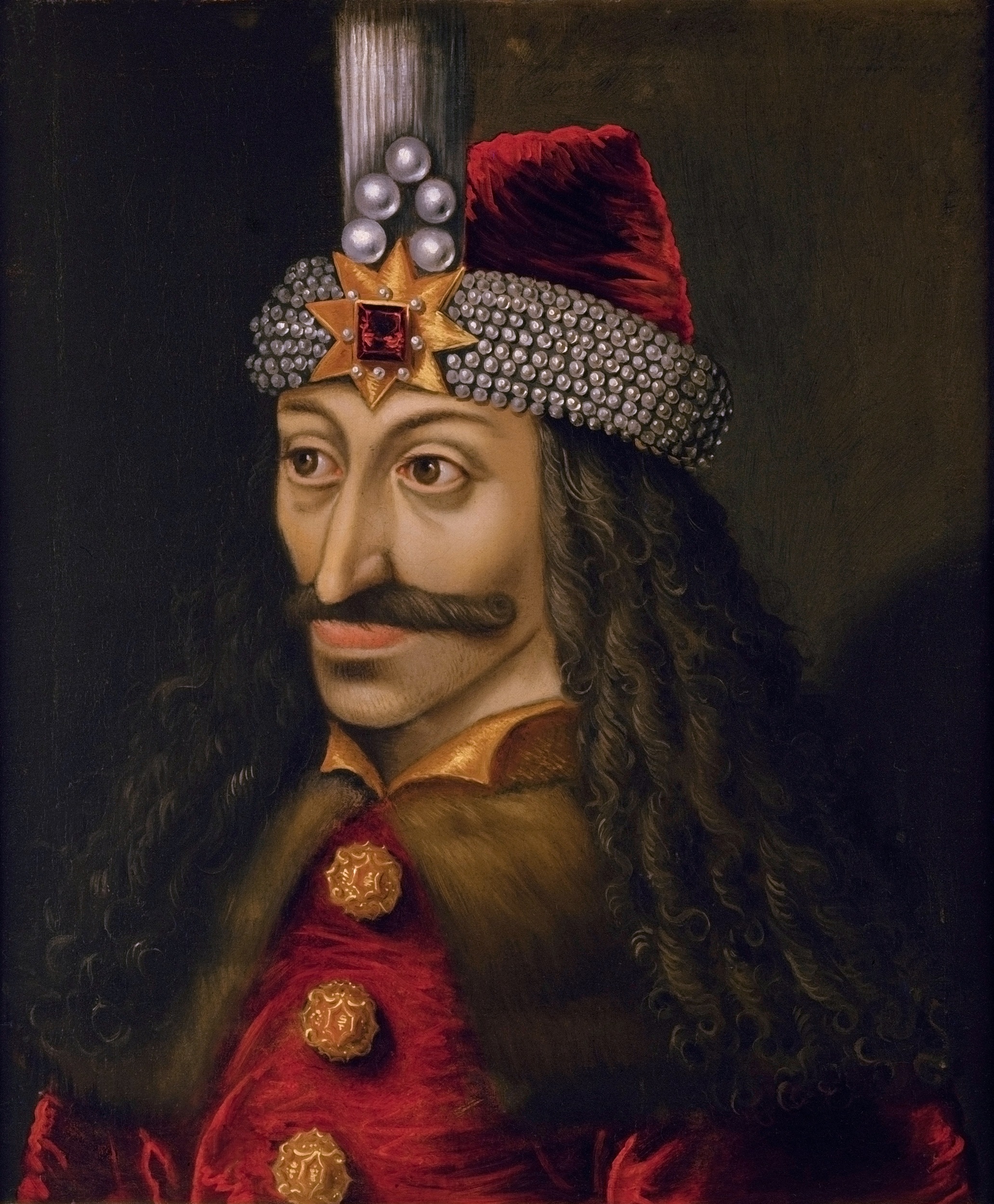
Portrait of Vlad III Dracula, Prince of Wallachia
The History of Bran Castle
Bran Castle is famous for more than its ties to Count Dracula. It has a rich history that goes back centuries. In the early part of the 13th century threats from the neighboring Cumans and Asian Empires were of great concern. This saw an uptake in the need to secure and fortify important trans-Carpatian trade routes. Widely regarded as the most important route was that of Bran Gorge (now named Rucăr-Bran Pass). The terrain in the gorge was easy to navigate. It led to a vast natural amphitheater that opened up access to much of Western Europe. Initially, a wooden fortress was constructed to protect the pass. It is believed to have been built by the Knights of the Teutonic Order. They were a Catholic religious order founded as a military order in 1192. It was destroyed during a conflict with the Mongols in 1242.
The castle that stands today is named for the village, Bran, where it is located. The first documented mention of Bran Castle was an act that was issued by Louis I of Hungary on the 19th of November 1377. It granted the Saxons of Kronstadt the privilege to build the stone castle at their own expense and labor force. The castle was completed in 1388. It served not only as a fortress at this time but also as a customs post to Transylvania.
Due to Bran Castle’s geopolitical advantages, it was a constant target of the Turks. In 1441 The Ottoman Army raided Transylvania. They made their way to Bran Castle where they were defeated by Janos Hunyadi (English: John Hunyadi) (Hungarian: Iancu de Hunedoara) voivode of Transylvania. This defeat is said to have strengthened his relations with the residents of Brasov.
The Basarabs
The Voivode, Basarab I The Great, was initially a vassal of the Hungarian King. He later gained independent reign over Wallachia after the Posada Battle sometime between 1324 and 1330. After this victory, he went on to establish the first ruling Dynasty in Wallachia, the House of Basarab (also known as Bazarab or Bazaraad). By 1447 there were two main rival lines, the House of Drăculești and the House of Dănești.
During this time Janos Hunyadi showed support for Vladislav II of Wallachia. He was from The Dănești branch of the House of Basarab. Vlad II Dracul was the father of Vlad III Dracula, Mircea II Dracula, and Radu III Dracula commonly referred to as Radu The Handsome or Radu The Fair. They were from The Drăculești branch of the House of Basarab.
Bran Castle and Vlad The Impaler
In 1448 Vlad III Dracul began his reign in the principality of Wallachia. According to a letter, he delivered through Bran Castle, dated October 31 (I swear I’m not making this up) of the same year, he came into conflict with the residents of Brasov. It highlighted the beginnings of a very strained relationship between Vlad, the merchants of Brasov, and the boyars.
It has been widely stated that the voivode of Wallachia was a vassal of the Magyar King. Vlad supposedly implemented protectionist economic policies (trade fairs) to serve his relationship with Magyar (Hungary). These foreign policies negatively impacted the merchants of Transylvania, especially those of Brasov.
During his second reign, Vlad wanted to gain favor with the Magyar King. To achieve this he would enter a treaty where he would recognize the King’s sovereignty over Wallachia. Several weeks later, Vlad traveled through Bran Gorge to meet with the Magyar King, Ladislaus the Posthumous, and sign the treaty. The reason for the alliance was to secure the support he would need to ensure the efficacy of his anti-Ottoman policy. Included in the document was an additional treaty between Vlad and the merchants of Brasov. It stated that the two parties would assist the other if one was to be attacked by the Ottoman Army. Although, shortly after the Transylvanians chose not to honor the agreement as they began to harbor rival contenders to the throne of Wallachia.
In response, Vlad launched “punishment campaigns” in a number of villages, including Brasov and Sibiu. According to multiple sources, after one such raid in 1459, he retreated into Wallachia through Bran.
He later returned to the area through Bran Gorge.
Some online accounts suggest that Vlad may have taken control of Bran Castle at one point. I could not find any credible documentation confirming this. However, he could have and it was not documented as Bran Castle kept predominately administrative records and did not document any military events. There is more I can say about Vlad III Dracula and I plan to do so in a future article.
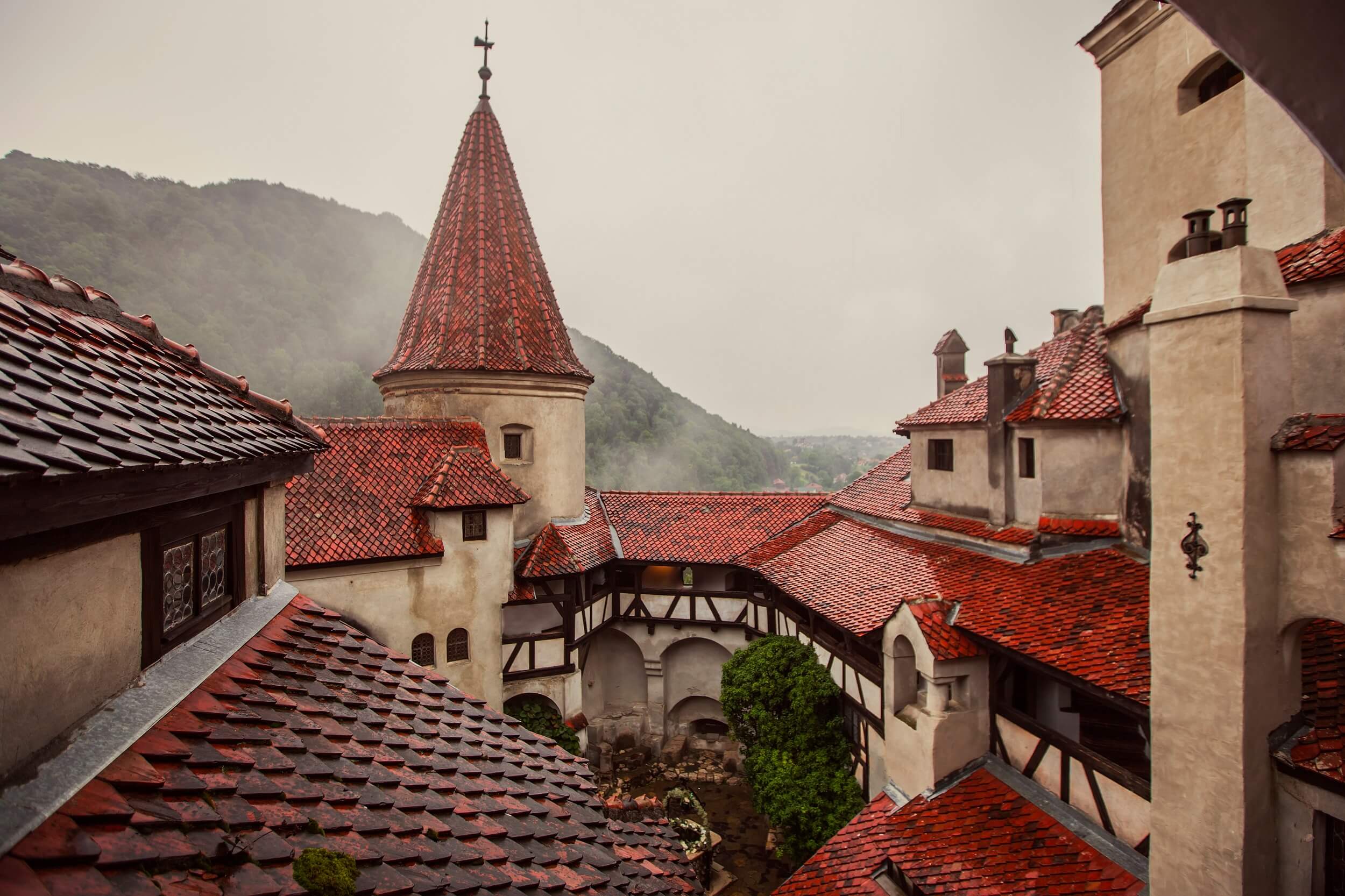
Interior of Bran Castle, Romania
History of Bran Castle Post Vlad The Impaler
A letter was sent on the 10th of January, 1477 by Stephen III of Moldavia confirming the death of Vlad the Impaler. It claimed they had been ambushed by the Ottoman Empire who decapitated Vlad and sent his head to Sultan Mehmet II in Constantinople as a trophy.
Moving on from this era, I am focusing on the significant periods leading up to today in a timeline. Source for this timeline: brancastle.com
- 1498 – The Saxons of Brasov purchased the right to use the castle for 10 years, for 1000 florins, from King Vladislav II Jagello of Hungary.
- 1651 – After extending the castle’s lease with the Princes of Transylvania several times Brasov sold the castle to George II Rackoczi, Gheorghe Rackoczi.
- 1593 – There was an explosion in the powder mill damaging the structure.
- 1617 – A severe storm destroyed the roofs. The castle underwent reconstruction during the reign of Gabriel Bethlen (1613 – 1629), when the gate’s tower, the round tower, and the donjon were all renovated.
- 1723 – By this time the castle had extensive damage from the elements and numerous attacks. A renovation was completed on the northern tower of the castle, as mentioned in an inscription.
- 1836 – Over 100 years later Bran Castle lost its military and commercial significance after the border between Transylvania and Wallachia was moved to the mountains, at Pajura. The castle continued to be an administrative seat.
- Between 1883 and 1886 – The imperial authorities agreed, at the insistence of the Brasov inhabitants, to repair damages to the castle made during the Revolution of 1848 and the Russo-Turkish War of 1877. Extensive restoration work was carried out.
- 1888 – The City Administration of Brasov transferred the castle to the region’s forestry. For 30 years, the castle fell into decay – it was inhabited, up to 1918, by the foresters, woodsmen, and forest inspectors coming from Brasov.
- 1897 – Bram Stoker Publishes Dracula on May 26
- 1920 – After 1918, Transylvania became part of Greater Romania. On December 1st, 1920, Bran Castle was gifted to Queen Maria of Romania by the citizens of Brazov through their town council. The Castle became a favorite residence of Queen Maria, who restored and arranged it to be used as a residence of the royal family.
- 1932 – The castle added a hydroelectric power plant on the stream Turcu. It was used to light the castle and was connected to the towns of Bran, Simon, and Moeciu of which the residents were said to be grateful and thanked Queen Marie. The area around the Castle was turned into an English Park with two ponds and a Tea House. Other buildings were erected: a guesthouse, a wooden church, staff housing, stables, and a garage.
- 1940 – After Queen Marie’s death a Sarcophagus containing her heart was placed into a chapel crypt across the valley from the Castle.
- 1944 – The castle was converted into a hospital during World War II by Princess Ileana who had inherited the castle from Queen Marie. It treated wounded soldiers from Brasov after the Red Cross hospital was bombed. She named it “The Hospital of the Queen’s Heart”, After 1945, the hospital continued to treat people, including those wounded and maimed in the war. Princess Ileana cared for patients as a nurse and even operated in the hospital. She continued this work until January 1948 when she was forced with her family to leave the country by the newly installed communist regime.
- 1956 – Bran Castle was converted by the communist authorities into a museum.
- 1961 – After fleeing Romania with her family, Princess Ileana, moved via Switzerland and Argentina to the United States in 1950. Then in 1961, she began living in a convent and was ordained as Mother Alexandra. She revisited Bran Castle in 1990. She died not long after in 1991, and was buried in The Orthodox Monastery of Transfiguration, in Ellwood City, Pennsylvania, which she founded and was the abbess. Placed in her grave was a small box containing earth from the foot of Bran Castle. It was collected when she was exiled.
- 1993 – The castle’s restoration works, which had started in 1987, were finished. The Castle was reopened as a museum and was reintroduced into the tourist circuit.
- 2001 – I visited Bran Castle.
- 2006 – After a series of legal battles the castle was legally handed back to the heirs of Princess Ileana of Romania, Archduke Dominic, Archduchess Maria Magdalena, and Archduchess Elisabeth. Dominic Habsburg, the grandson of former Queen Maria, recalled the moment in 1948 when he was removed from the castle with his family as a 10-year-old by the country’s communist government. “It was wintertime when it happened,” Mr Habsburg said. “We were expelled from the country, and we were only allowed to take a minimal amount of our belongings.”Mr Habsburg then went on to express that he was “not OK” with the fact that the castle was associated primarily with Dracula. “It’s fiction, and not a very nice fiction,” he said. “But what can I tell you? It’s part of the image today. For me it’s my home, and it was my grandmother’s home, and my grandmother was a fairytale queen in many senses of the word, so that would be a much nicer image for me. “I always wanted to go back on my own terms, and now I can,” he said.
- Today – Bran Castle still acts as a museum and is open to the public. They also host several events throughout the year. You can also schedule group tours, private tours, events, and more. To learn more visit bran-castle.com
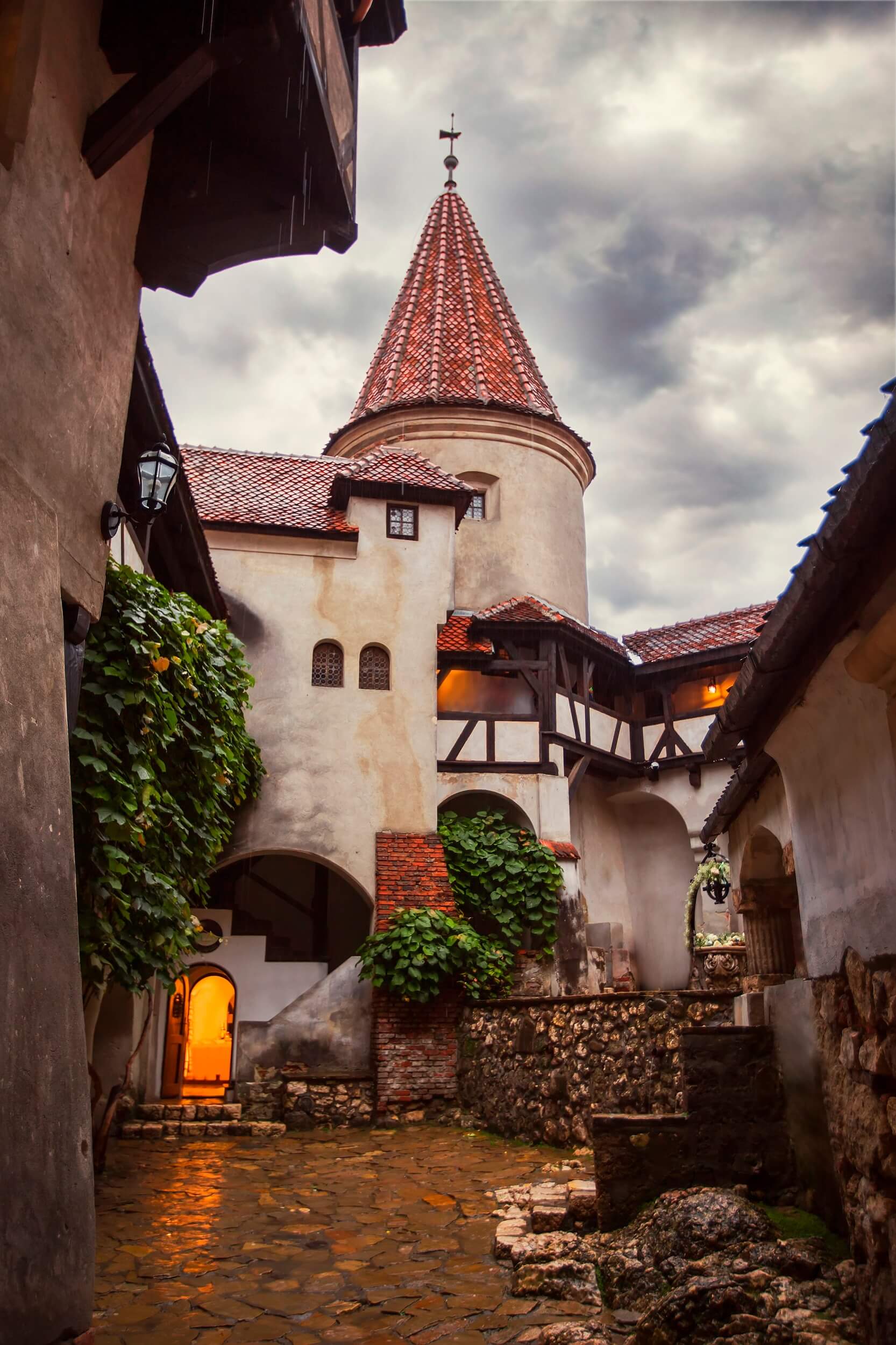
Bran Castle Interior Courtyard

Subscribe Today!
Please Share & Comment!
We hope you enjoyed learning about the Bran Castle, its connection to Count Dracula, and my visit there. If you have knowledge regarding Bram Stoker and his inspiration behind Dracula, please share it. Also, if you have visited the castle we would love to hear about your experience. Please feel free to leave a comment below and share this post with your friends and family.
We will continue to add interesting, spooky stories and Halloween history. So make you Subscribe to Mad Halloween for all the latest updates. Thank you so much for stopping by and make sure to visit our Halloween Shop and view more Blog Posts!

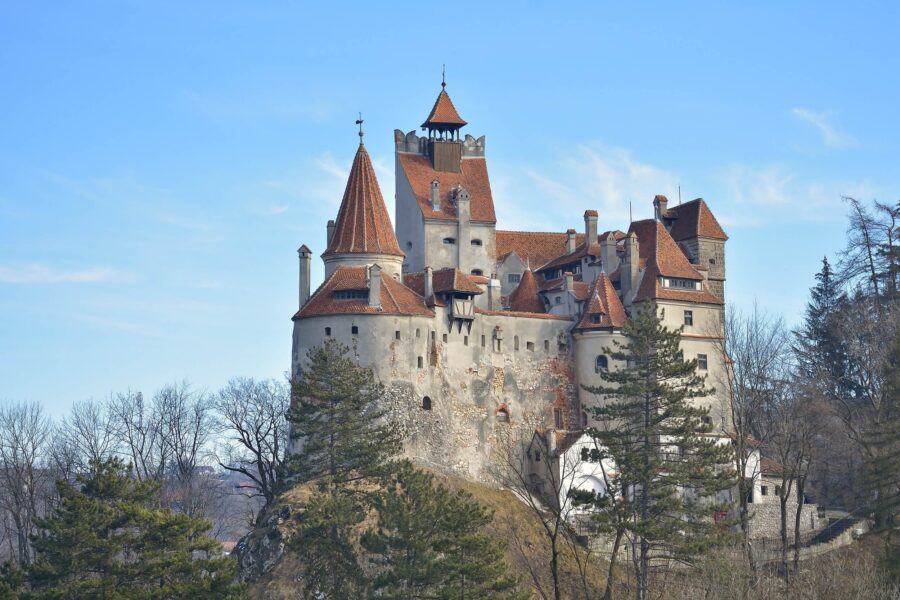
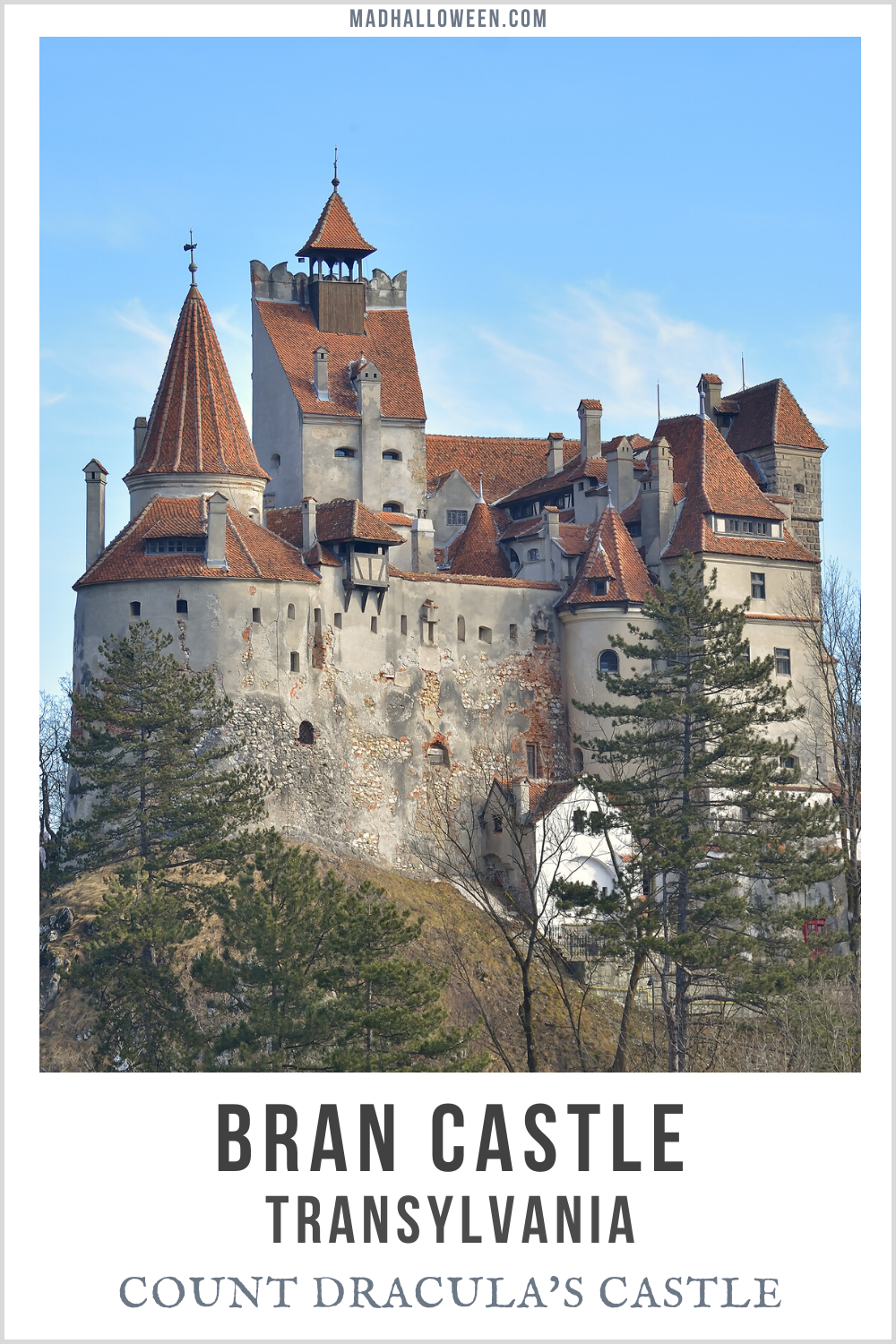



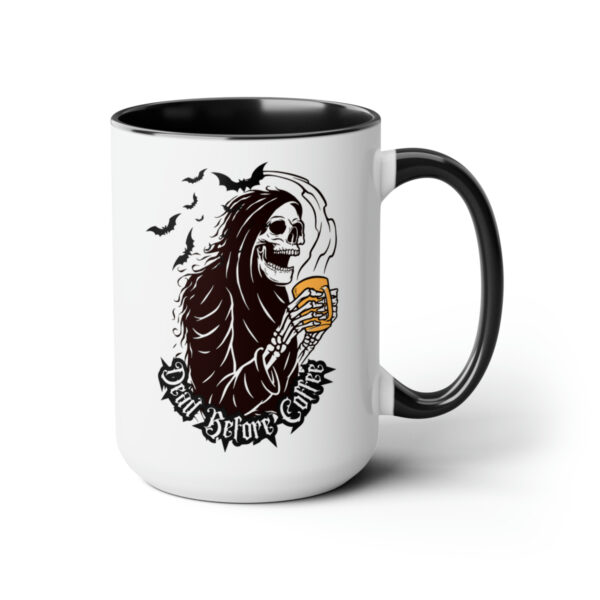
Leave a Reply